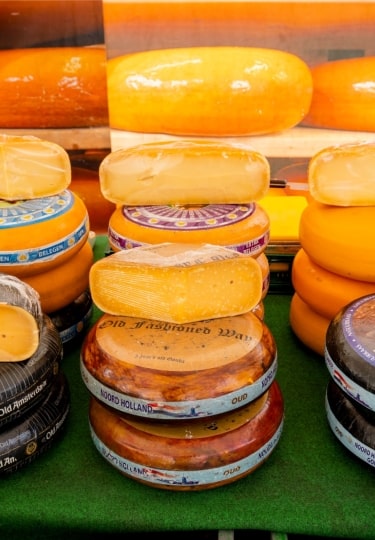The best shopping in Amsterdam encompasses everything from one-of-a-kind antiques to sleek, modernist furnishings to vintage clothing shops. Amsterdammers often have impeccable style and an eye for highly functional, aesthetically striking design. You’ll find all the well-known international luxury brands here, along with far more niche, indie local labels.
Ask locals about the best shopping street in Amsterdam and they may point you to Kalverstraat, Haarlemmerstraat, or PC Hooftstraat. If you’re looking for more unconventional souvenirs, you might just find them in one of the city’s well-stocked flea markets. Whatever you’re searching for, there’s a place in this vibrant city to buy it.
Here are some of the best places to shop in Amsterdam.
Bloemenmarkt
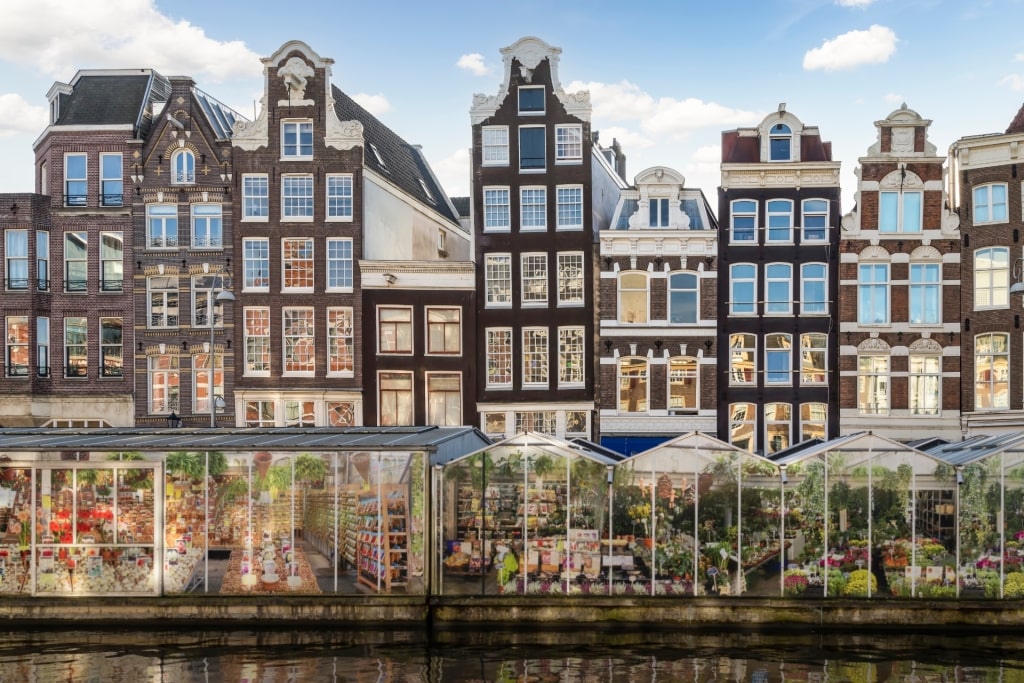
Bloemenmarkt
To this day, flowers are one of the chief exports of the Netherlands and the Dutch take them seriously. This is not the country that invented the tulip—that honor belongs to Turkey—but it is the one that made them a global phenomenon. During the height of “tulip mania” in the 1630s, especially rare, coveted bulbs commanded prices higher than a house.
While that particular market speculation frenzy subsided, these flowers are still a point of national pride. These days, you don’t have to spend a fortune to get them. Even if you’re only in town for a short stay, shopping for flowers in Amsterdam is an especially lovely experience. And there’s no more iconic place in Amsterdam to do so than the Bloemenmarkt, or “flower market.”
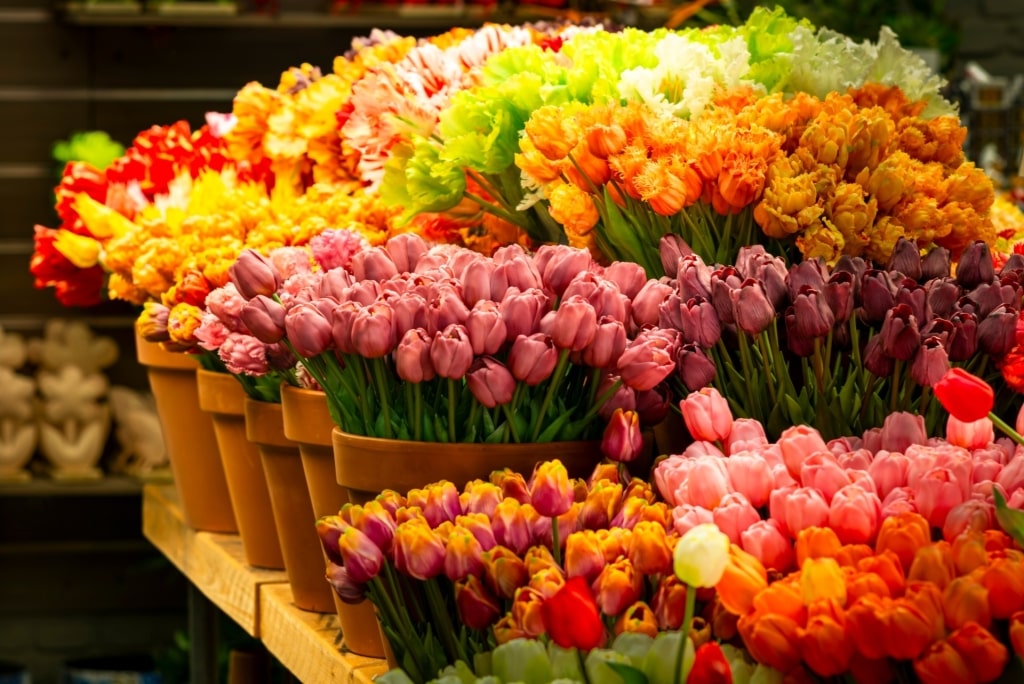
Bloemenmarkt
The market has been serving the city since 1862. Because farmers and florists used to transport their petaled wares by boat, it’s situated right on the Singel canal in the city center. These days, the boats holding the flowers are stationary, but still bobbing in the water. They also sell a number of souvenirs less ephemeral than flowers.
Still, if you’re looking to cosplay as a local, buy a small bouquet for your significant other, friend, parent, or child. Or simply sip a strong Dutch coffee and enjoy the spectacular people-watching. The Bloemenmarkt is open seven days a week. Try to arrive as early as possible, when the best blooms are still on display.
The Nine Streets
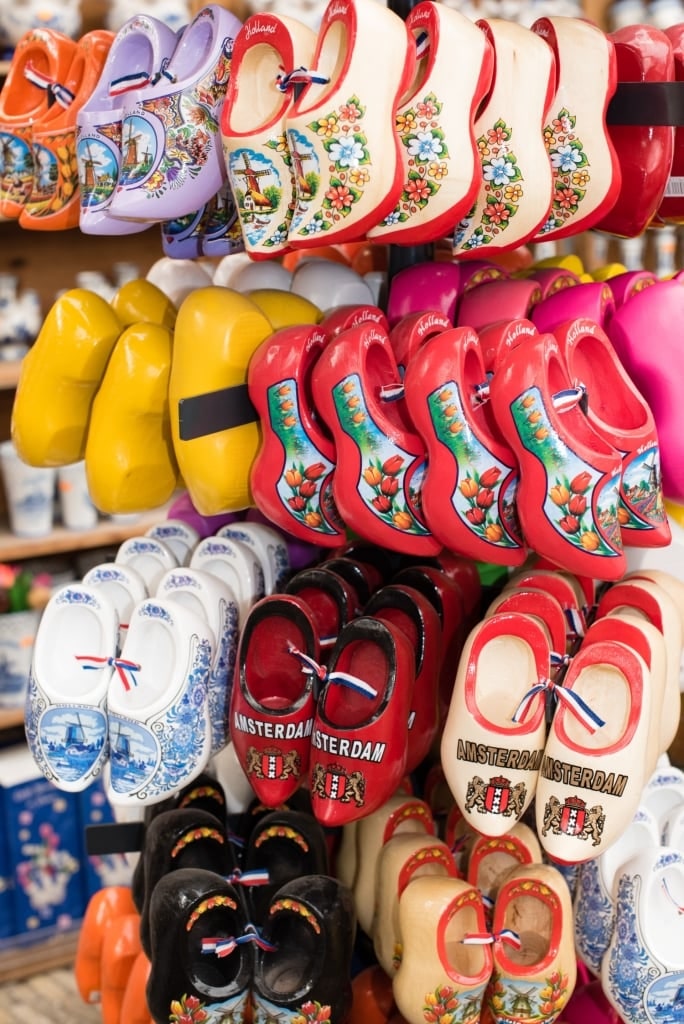
Shop in the Nine Streets
Ask Amsterdammers where to shop and they’re likely to point you in the direction of de Negen Straatjes—the Nine Streets—rather than an individual store. The area encompasses a three-by-three grid of some of the toniest shopping streets in the city. More than 250 shops selling all sorts of clothing, design furniture, and more are clustered around here.
Amsterdam is famous for its canals, and the anchors of the Nine Streets area are four of the city’s most iconic, all lined by beautifully preserved canal houses. Herengracht is especially well known for its opulent, historic homes. Prinsengracht, meanwhile, is home to a thriving gallery scene and is a fantastic place to shop for works by local artists.
Waterlooplein Flea Market
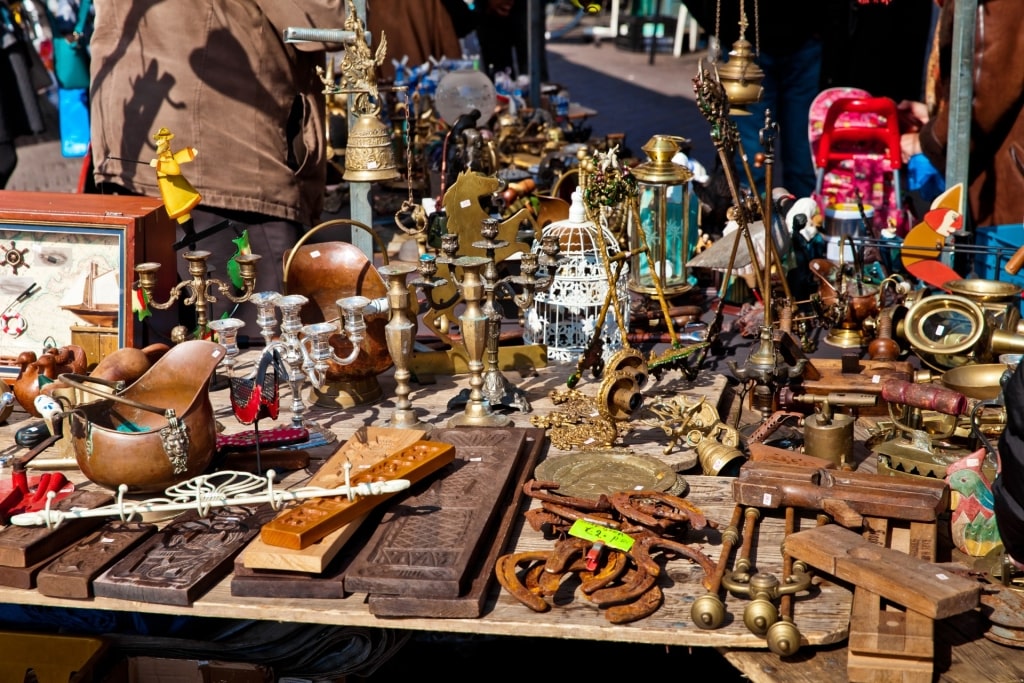
Waterlooplein Flea Market
Antique collectors and bargain-hunters will want to make a beeline for the oldest flea market in Amsterdam. This absolutely enormous market has been operating on Waterlooplein, or Waterloo Square, for more than 130 years and is still popular with locals. It’s one of the best places to buy leather jackets and vintage fashions.
While some flea markets are really repositories for cheap, mass-produced goods, there are real gems to be found here. There’s invariably an incredible selection of used books in various languages, along with musical instruments, cameras, and art of all kinds at the 300-plus stalls. As with any market of this scale, you may have to dig deep, but you might stumble across a rare first-edition tome or John Lennon’s guitar—it’s happened before.
Albert Cuyp Market

Albert Cuyp Market
Since 1905, this sprawling street market—named for its home on Albert Cuypstraat—has been selling anything and everything to eager Amsterdammers. Located in the perpetually hip De Pijp neighborhood, it draws visitors in droves each weekend.
The roots of the market actually extend back into the 19th century, when it housed a ramshackle collection of merchants from all over. By the early 20th century, the government decided to intervene and impose a bit more structure. Today, the Albert Cuyp Market fully blocks off traffic and turns this into a pedestrian-only area.
If you’re on the hunt for souvenirs, you’ll find a little bit of everything at the 260-plus stands here. Of particular note are the second-hand clothing offerings, along with the jewelry, handicrafts, and leather goods.
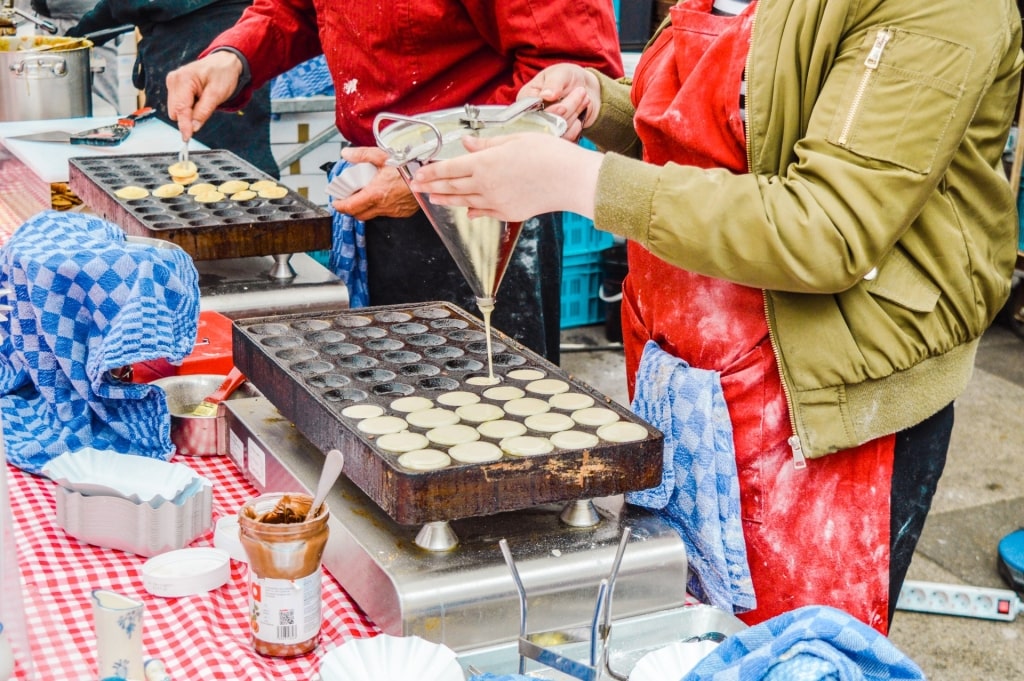
Albert Cuyp Market
Even if you’re only browsing, it’s worth coming here for the scenery and the snacks. It’s a great place to grab a warm, freshly made stroopwafel, the classically Dutch, caramel-filled treat. Children will want to dig into a plate of poffertjies, bite-size pancakes half-fried in butter and buried in powdered sugar, syrup, or other toppings.
To really live like a local, order the raw or lightly pickled herring when in season. The traditional way to eat it is to down the whole fish in one go with raw onions on the side, although less adventurous eaters can order it fileted.
De Bijenkorf
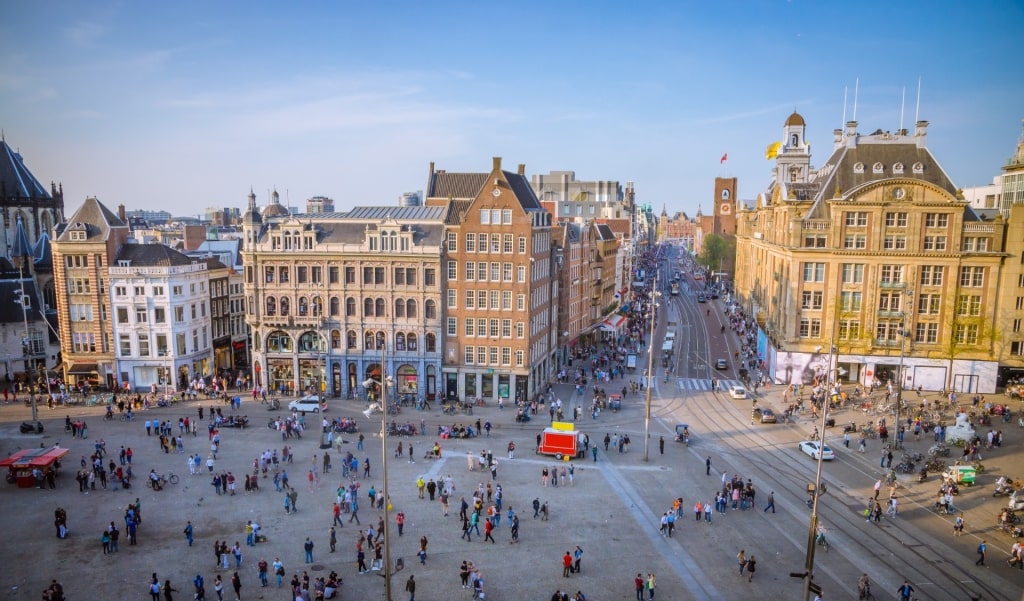
De Bijenkorf, Dam Square
Berlin has KaDeWe, London has Harrods, and Amsterdam has De Bijenkorf, the luxe flagship branch of one of the ritziest department stores in the Netherlands. Founded in 1870 by Simon Philip Goudsmith, it harkens back to a time when these places were the height of glam. It resides right on Dam Square in a landmark building in the very heart of the old city center.
It’s important to note that De Bijenkorf has a powerful cultural significance to Amsterdam that goes far beyond commerce. Prior to World War II, this was a Jewish-owned department store that had over 1,000 Jewish employees.
During the Nazi occupation of the city, the business was taken over and both its owners and employees targeted. The owners, Isaac and Alfred Goudsmit, were able to flee to the United States and survived the war. After the city was liberated in 1945, they were able to resume leadership of their business.
Haarlemmerstraat and Haarlemmerdijk
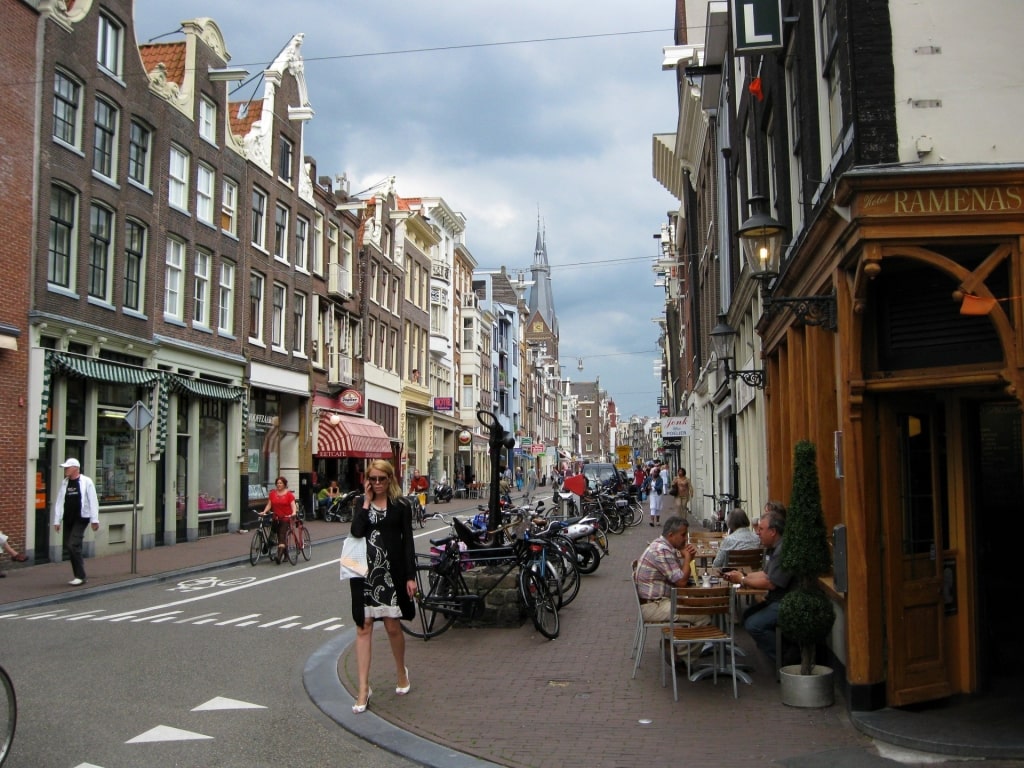
Haarlemmerdijk Photo by Johan Wieland on Flickr, licensed under CC BY-ND 2.0
If you’re looking for a break from all the international, upmarket brands, pay a visit to these two streets. Here, you’ll find the oldest indie cinema in Amsterdam, plus all manner of on-trend bars, cafés, restaurants, and more than 200 boutique shops.
This is the place to look for one-of-a-kind vintage finds, or works by up-and-coming Dutch designers, of which there are many. Amersterdammers take their interior design seriously and there are plenty of stores here catering to those with elevated, eclectic taste.
There are also quite a few high-concept stores by young creatives. Prices here tend to be more towards the affordable end of the spectrum than at some of the other main shopping districts.
Kalverstraat
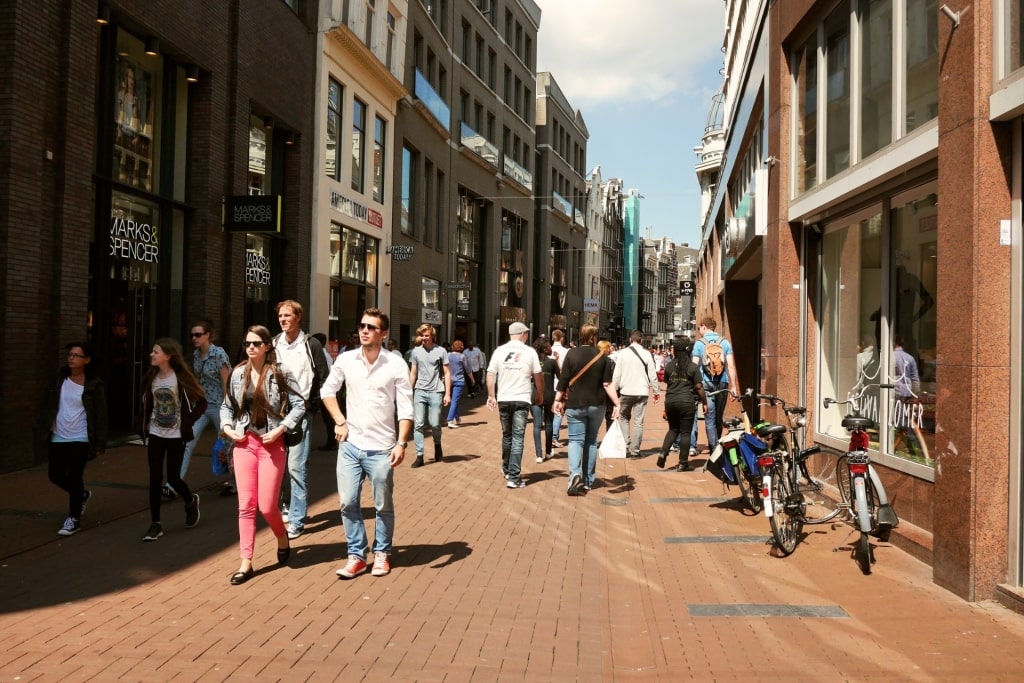
Kalverstraat Photo by Franklin Heijnen on Flickr, licensed under CC BY-SA 2.0
You can’t miss Kalverstraat, which runs from Dam Square—so central it’s sometimes simply referred to as “The Dam”—to Muntplein. Way back in the 14th century, this was quite literally a cow path, which explains the name “Calf Street.”
Today it’s a broad, brick-lined pedestrian street lined with just about every major brand of shop imaginable. If you’re looking for big-name international brands, this is the place to go. And even if you’re not, it’s one of the more pleasant ways to stroll through the heart of the city.
Read: Three Days in Amsterdam
PC Hooftstraat
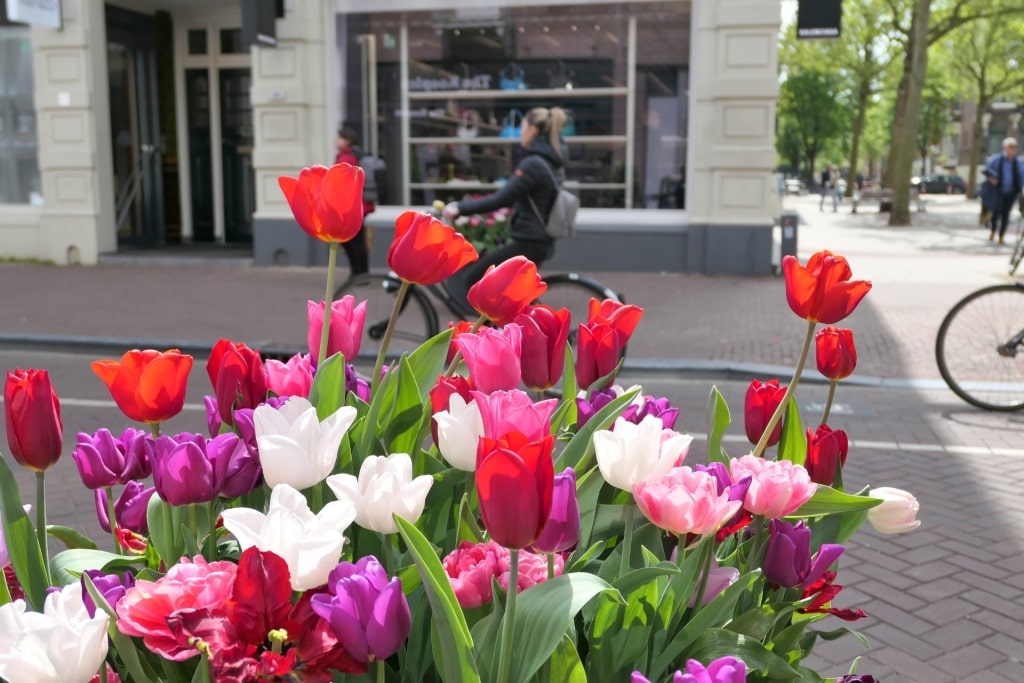
PC Hooftstraat
Lovers of luxury and the finer things in life will want to peruse the options on Pieter Cornelisz Hooftstraat, better known simply as PC Hooftstraat. This shopping street in Amsterdam is where you’ll find all the big labels—Hermés, Louis Vuitton, Chanel, Cartier, Gucci, and so on. The street is often likened to Amsterdam’s answer to New York’s Fifth Avenue. If Audrey Hepburn lived in Amsterdam, this is where she’d go to eat her croissant and gaze longingly into the window at Tiffany & Co.
Even if you’re not in the market for designer clothing, much like the Champs-Élysées, this is a fun spot to admire all the glittering, lavish window displays. It’s also right in the middle of town, a stone’s throw from Museumplein. Should you find yourself looking to explore further, the nearby streets of Van Baerlestraat and Hobbemastraat have more high-end options.
Magna Plaza
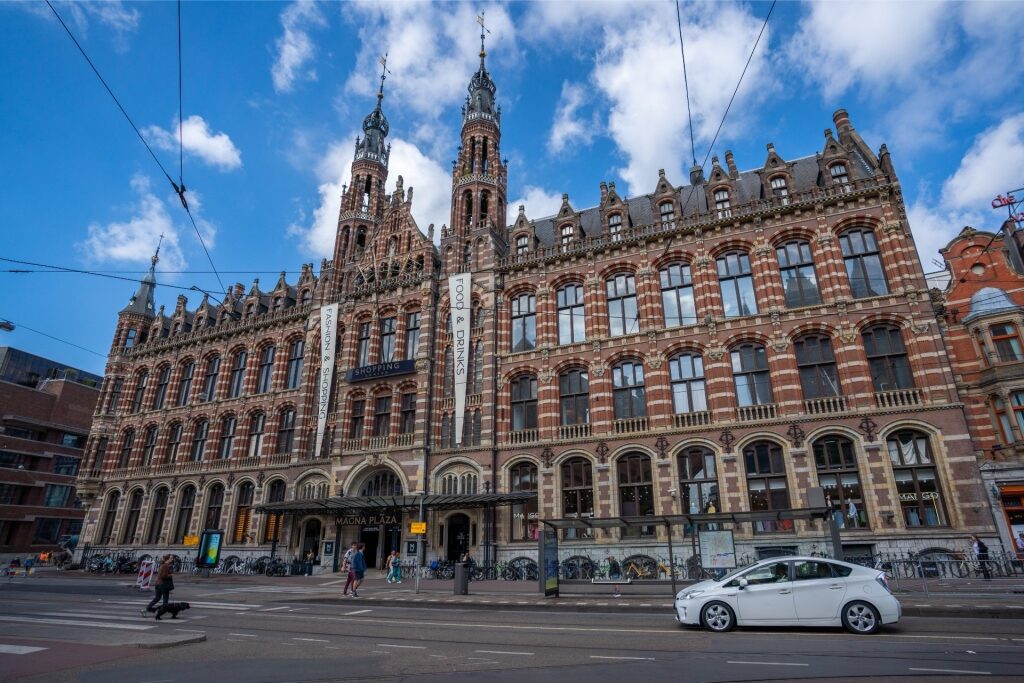
Magna Plaza
It’s not often that one can go clothing shopping in a Dutch national monument. This upscale shopping center is housed in a stunning 19th-century Neo-Gothic edifice. It was previously home to the Amsterdam Main Post Office building and still retains its air of grandeur. Although the entire interior has been revamped, the exterior architectural details are well preserved.
Before entering, pause to admire the pear-shaped domes that give this place its nickname “Perenburg.” Once inside, you’ll find a wide array of shops selling just about everything imaginable. In addition to the big international brands, there’s a well-curated mix of more local options. For instance, Henri Willig, a Dutch cheesemonger in business since 1974, is the perfect place to stock up on aged goudas.
Spiegelkwartier
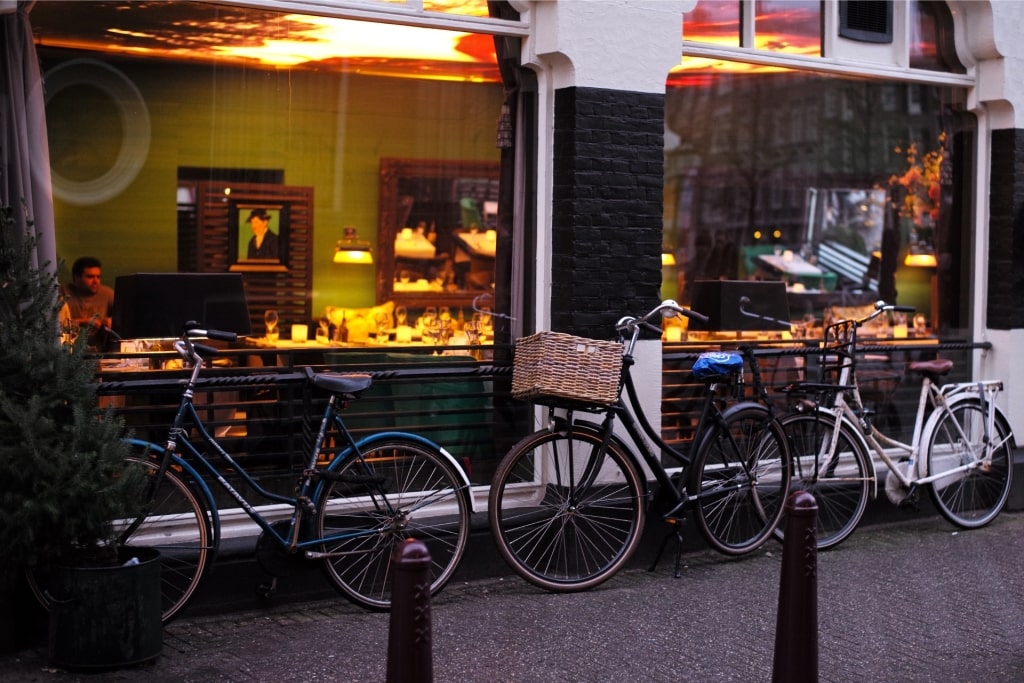
Spiegelkwartier Photo by RB Photo on Flickr, licensed under CC BY 2.0
Art and design aficionados will flip for the Spiegelkwartier, or the “Mirror Quarter,” towards the southern end of the Canal Belt. This stylish neighborhood is close to some of the city’s best-loved museums.
It’s a stone’s throw from the Rijksmuseum, home to one of the greatest collections of Rembrandts and other Dutch Old Masters in the world. Within the neighborhood itself, you’ll find the Amsterdam City Archives, housed in an Art Deco jewel. There’s even a museum centered on cats throughout art history: Kattenkabinet.
The streets of the Spiegelkwartier are almost a museum unto themselves. This is where you’ll find some of the most lavishly designed mansions from the so-called Dutch Golden Age.
With regards to shopping, the Spiegelkwartier is especially known for its antique shops. There are more than 70 of them here, often featuring rare furniture and objects d’art.
Utrechtsestraat
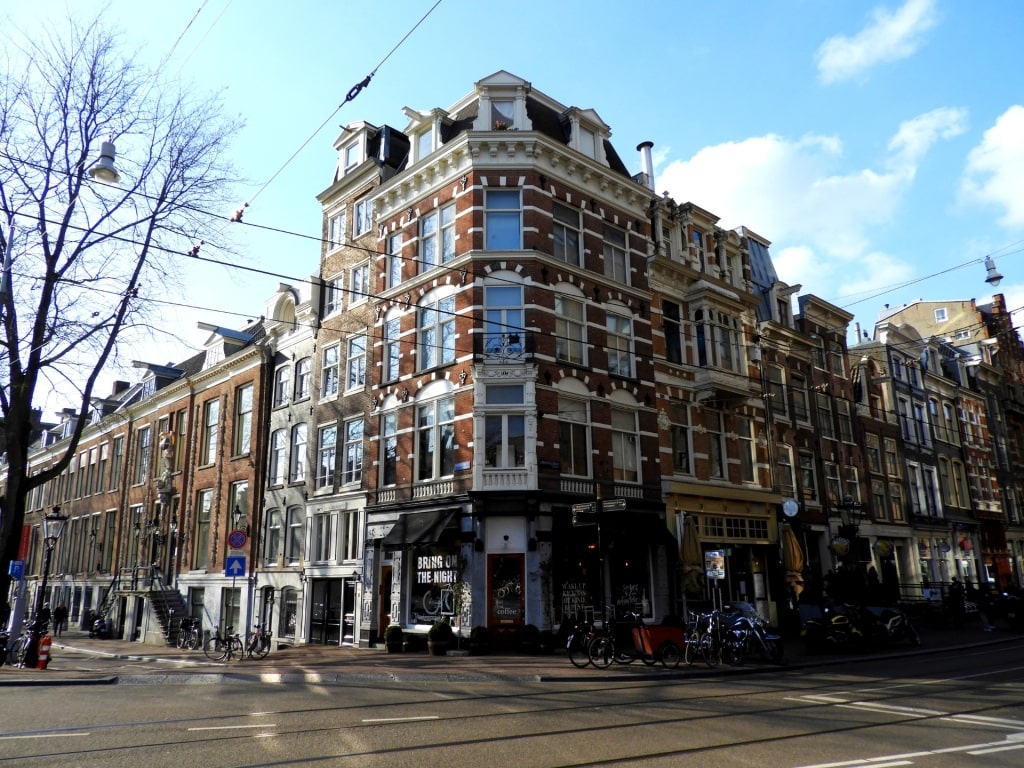
Utrechtsestraat
Located steps from Rembrandtplein, Utrechtsestraat is a bustling haven of smaller shops. Like virtually all of Amsterdam’s historic center, the street boasts beautifully preserved architecture. Many of these facades date back to the 17th century, even if their tenants are decidedly more modern.
Shoppers will find a little bit of everything here, from artisanal Dutch cheeses to clothing shops to shoe shops. Although you’ll find some larger brands here, the emphasis is more on small, eclectic offerings.
Nieuwe Spiegelstraat
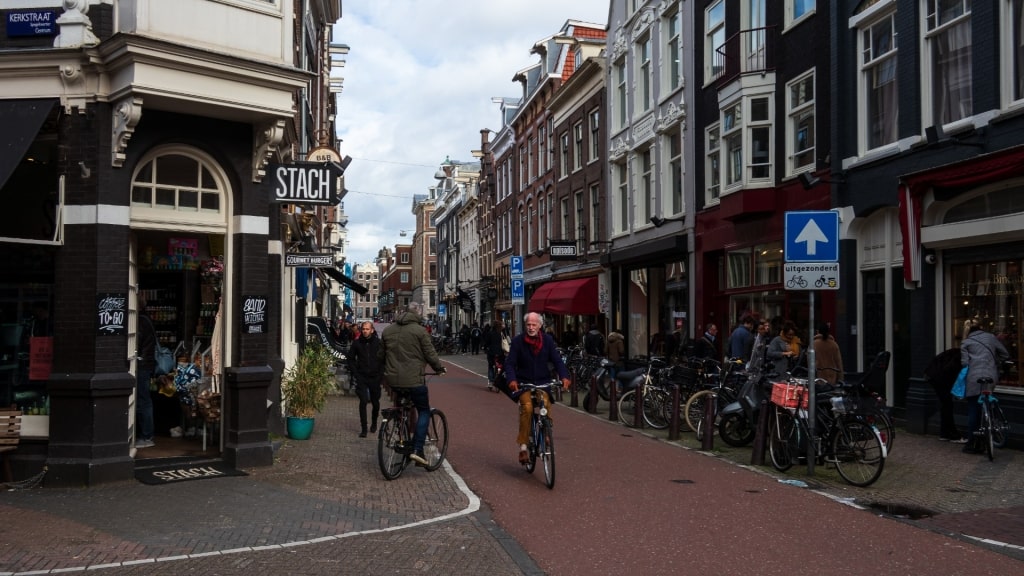
Nieuwe Spiegelstraat Photo by Hans Põldoja on Flickr, licensed under CC BY 2.0
If rare antiques are what you seek, this quirky street is the place. Even as the city around it has evolved, Nieuwe Spiegelstraat feels somehow frozen in time. The offerings range from the usual baroque furnishings to far stranger wares.
Even if you’re not in the market for old globes, historic maps, vintage telescopes, and other curiosities, it’s a pleasure to prowl through these collections of oddities. Think of it as something of a living museum.
Noord
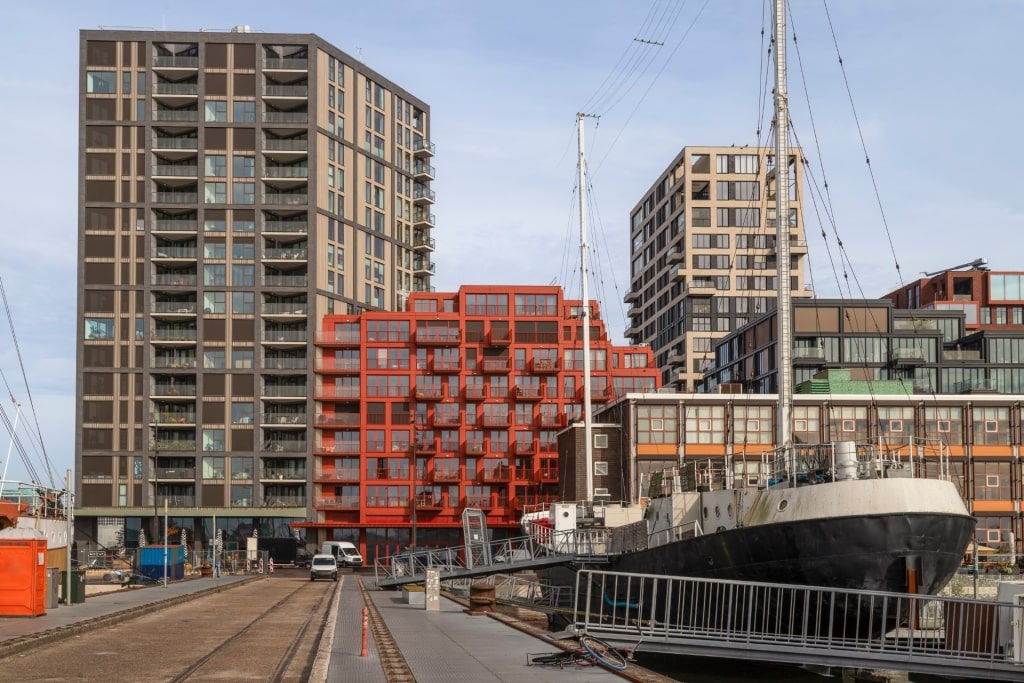
Noord
For travelers looking to hang with Amsterdam’s cool kids, Amsterdam-Noord has been the place to go for a decade now. Historically, this was a largely industrial area dominated by warehouses.
In more recent years, rising rents and limited space in the canal rings have made it challenging for young creatives to get a toe into the city’s historic center.
As a result, many young artists, designers, musicians, and aspiring restaurateurs set up shop across the river, drawn by the large open spaces and cheaper startup costs. Inevitably, Noord draws comparisons to London’s Shoreditch neighborhood or New York’s Williamsburg. It’s very much its own entity, however, with a decidedly Dutch flair.
Nowadays, it’s a hive of activity complete with some of the hottest restaurants, art galleries, and live music venues in town. It also has some of the best shopping in Amsterdam if you’re in the market for vintage clothing and accessories. Getting to Noord is part of the fun; it’s easily accessible via a quick, free ferry ride from Amsterdam Central Station.

IJ-Hallen
Once a month for an entire weekend, Noord hosts IJ-Hallen, the largest flea market in all of Europe. The market features 750 stands spread through both indoor and outdoor spaces. Canny shoppers will find unbeatable bargains here, plus a festive, carnival-like atmosphere.
Read: Amsterdam Travel Tips
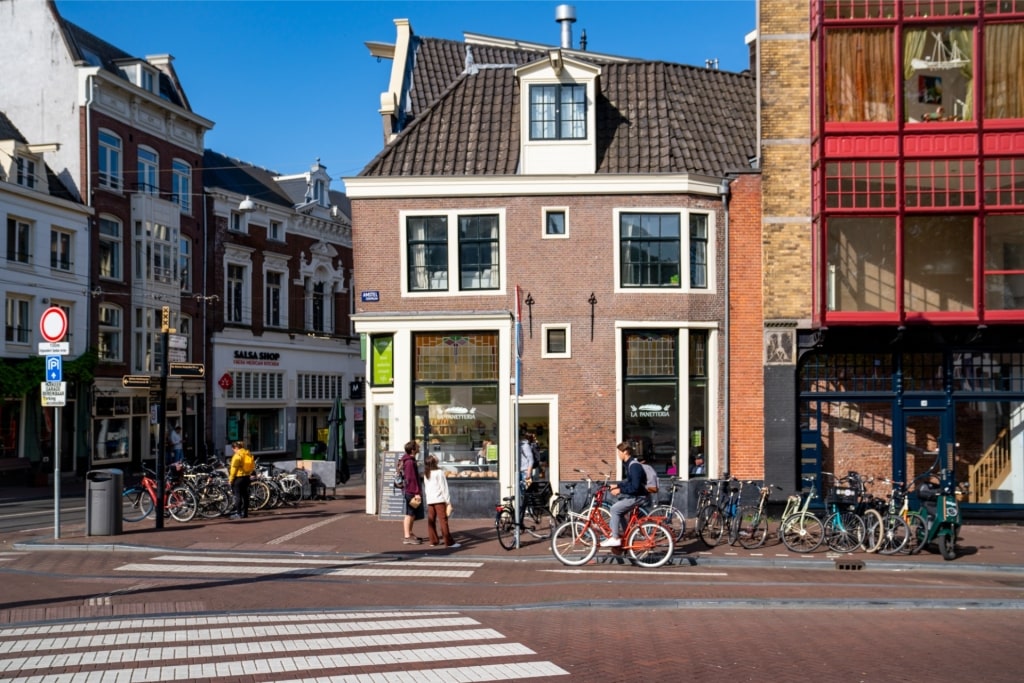
Amsterdam
Amsterdam offers an unbeatable mix of culture, dining, and shopping experiences. One of the best ways to discover all that city has to offer is on one of Celebrity’s cruises to Amsterdam. Browse itineraries and book your next voyage today.
